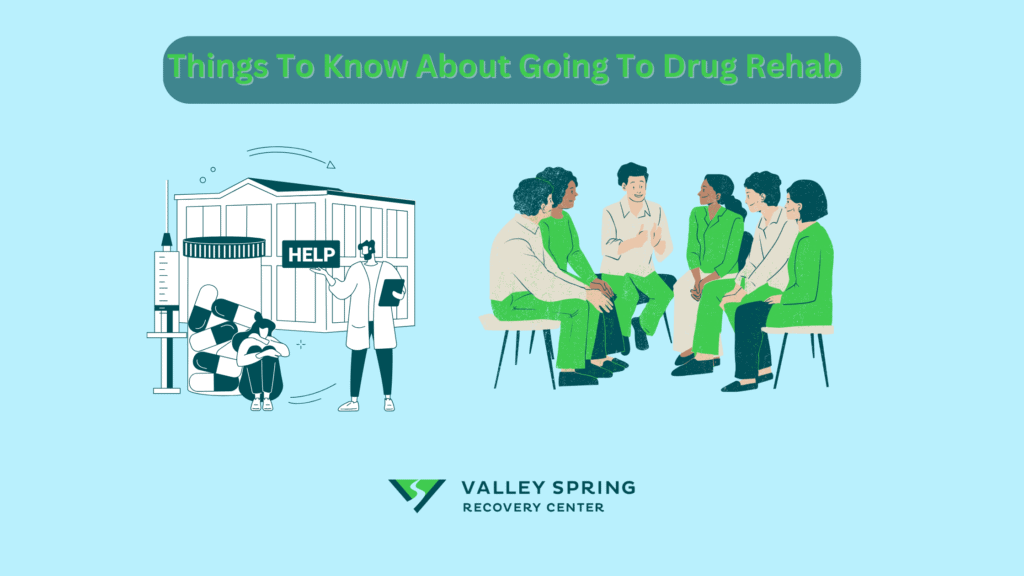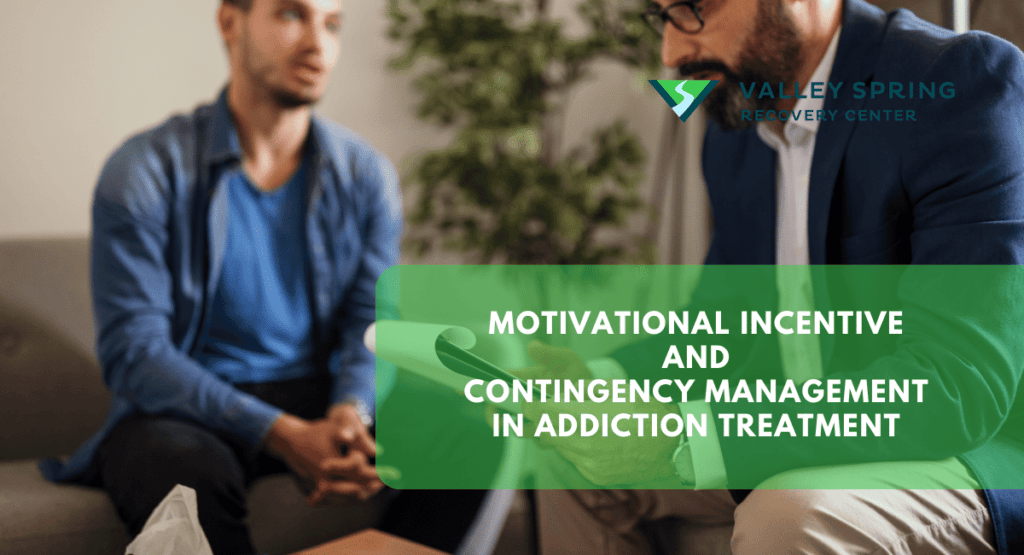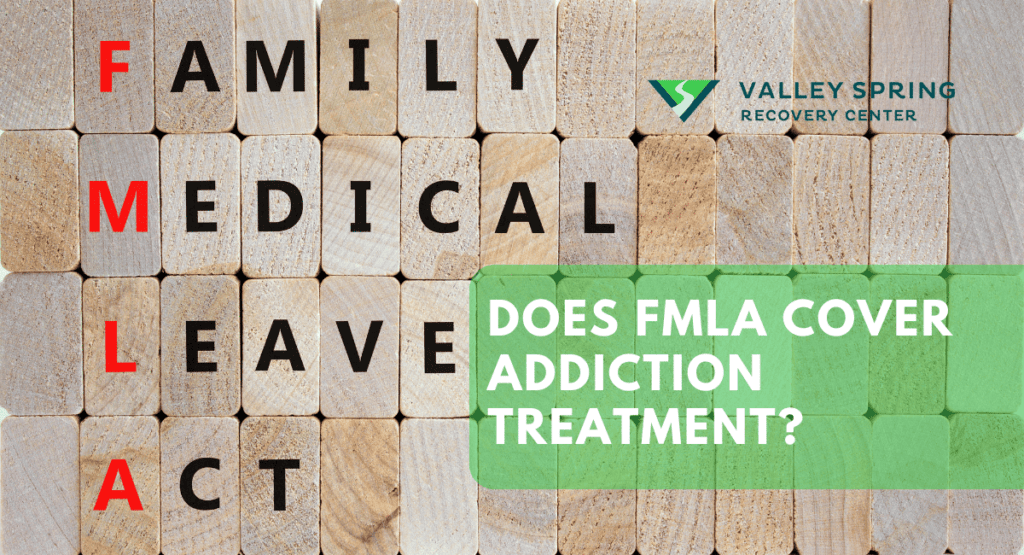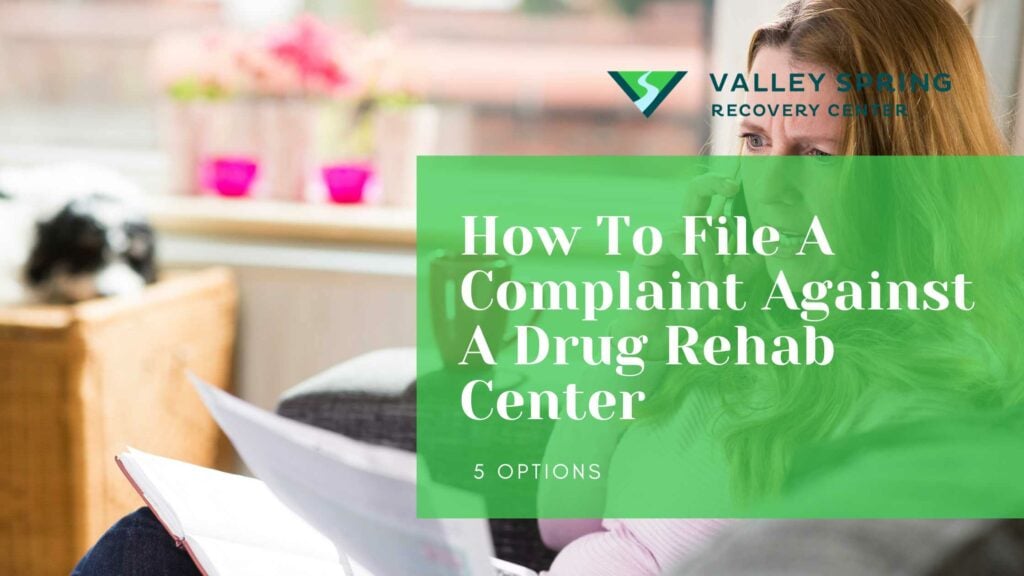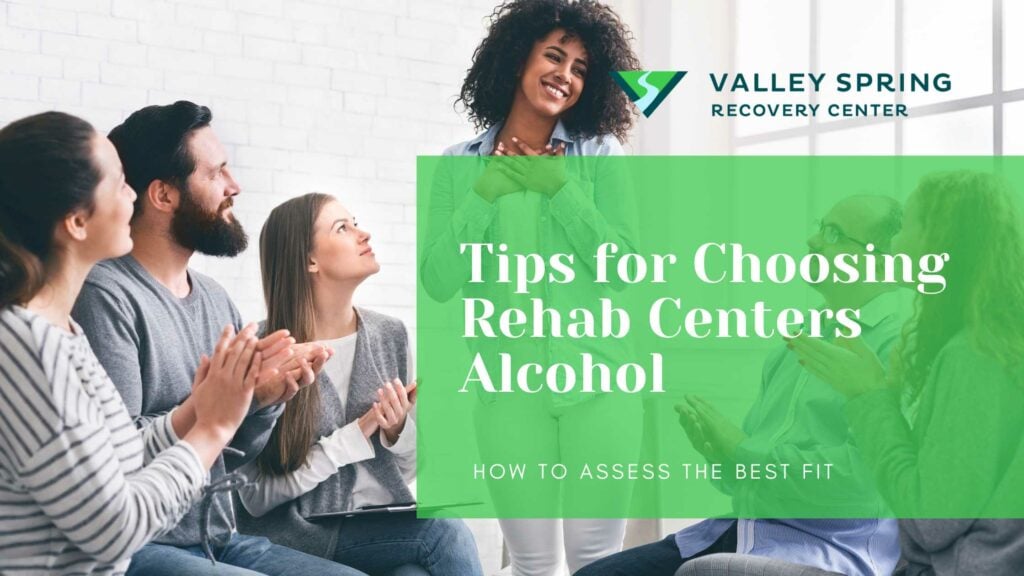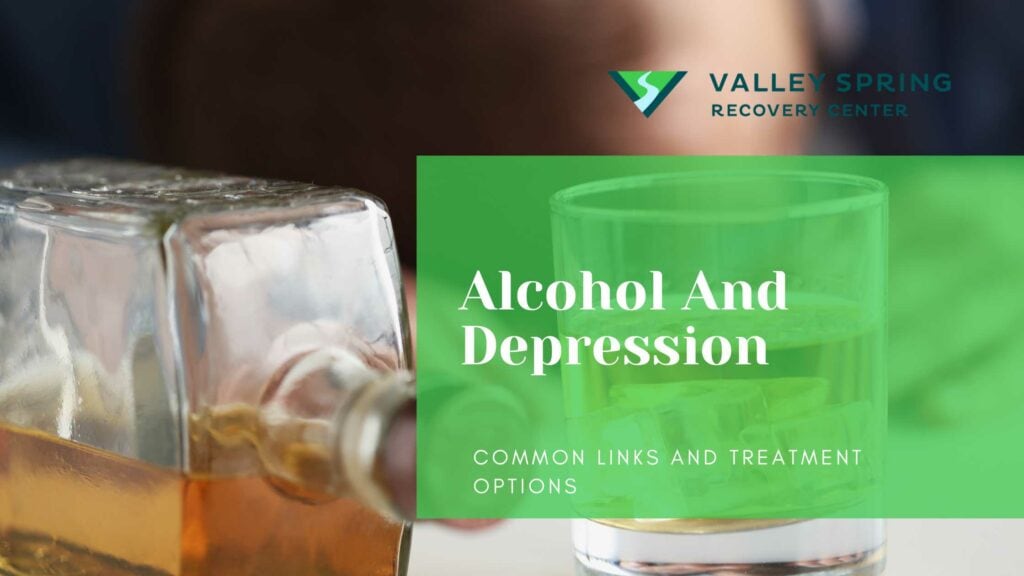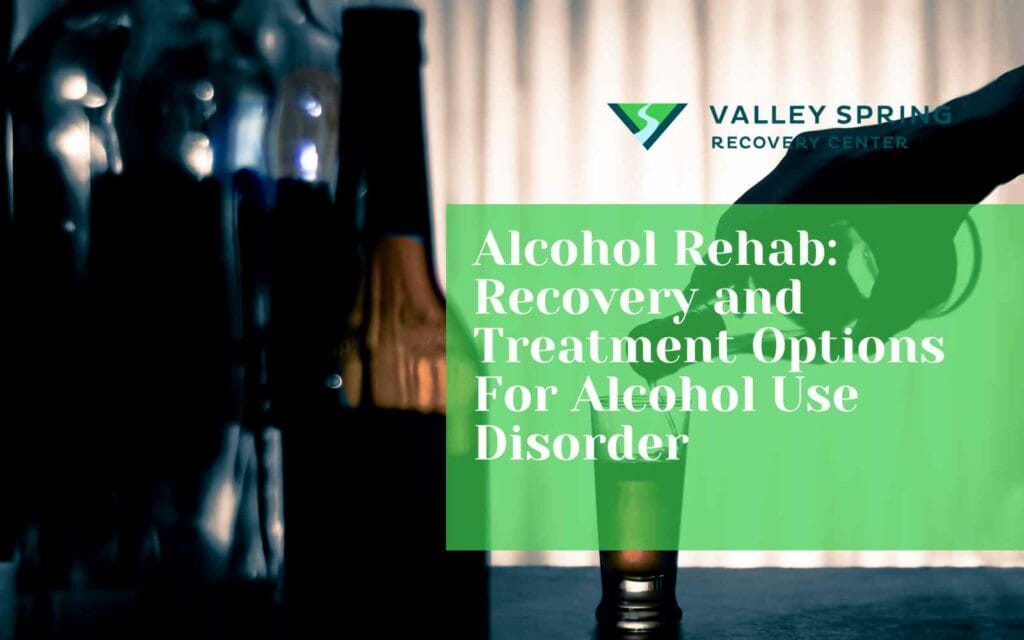Stepping into rehab is often a pivotal moment, marking the beginning of a journey to recovery from drug addiction, self-discovery, and renewed hope. Whether you’re contemplating this step for yourself or a loved one, understanding the intricacies of what rehab involves can be both empowering and reassuring. Our article, “Important Things to Know About Going to Rehab,” aims to demystify the rehabilitation process, providing you with essential insights into different treatment modalities, the importance of a supportive environment, and what you can expect from both short-term and long-term programs. We’ll delve into everything from the admission process to aftercare, helping you make informed decisions for a healthier, substance-free future.
Key Takeaways
- Understand the rehab process, including admission and intake, detoxification, counseling/therapy & aftercare.
- Select an appropriate treatment facility based on location/environment, methods & financial considerations.
- Prepare for long-term success by engaging in self-care strategies & building a sober support network.
What Should You Consider And Be Aware Of When Going To A Drug Rehab Center?
The decision to select the right treatment facility is critical and can impact your recovery journey significantly. Factors such as location, treatment methods, and financial aspects should be considered when choosing the best rehab center for you.
A careful evaluation of these factors can help align your unique needs and preferences with the chosen facility.
1) Understanding Of The Critical Steps In the Rehab Process
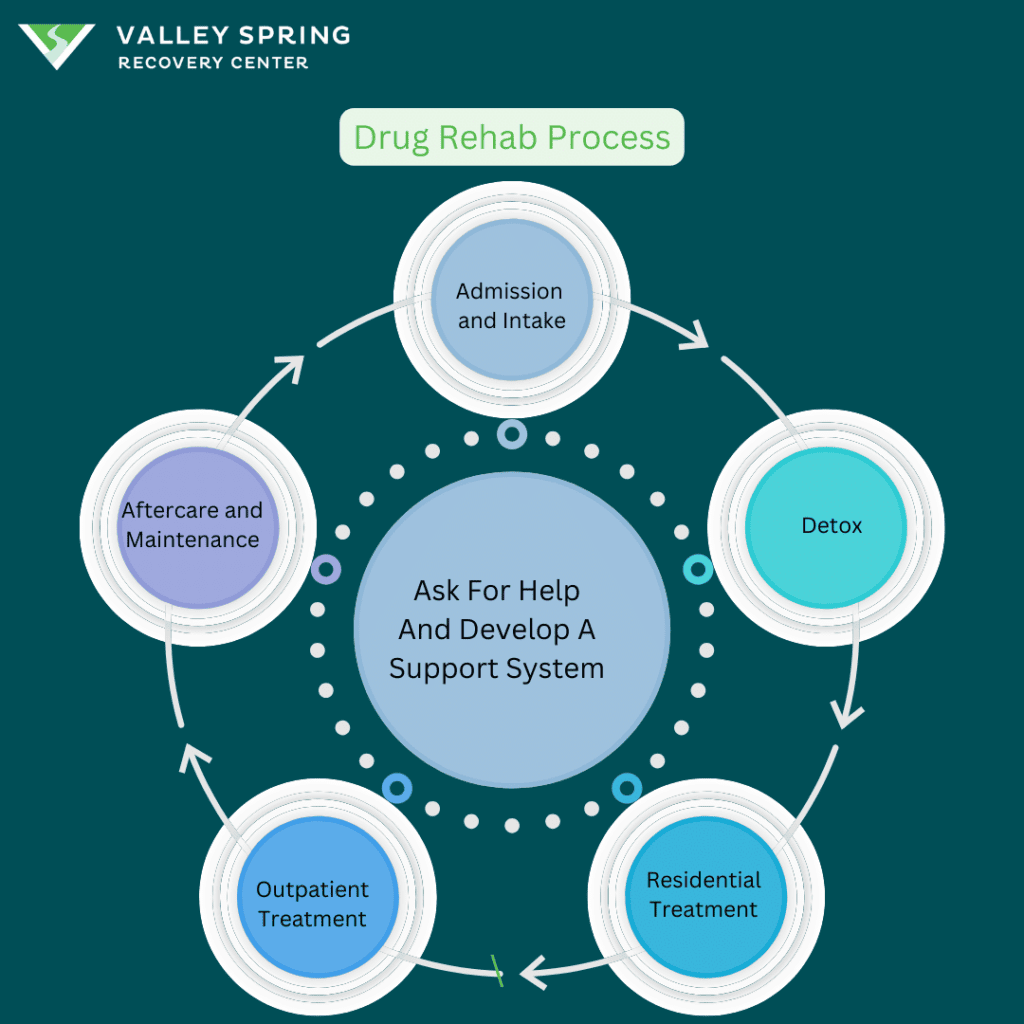
Gaining an understanding of the rehab process is a key component of successful recovery. Knowing what to expect and how to prepare can make a significant difference in your overall experience.
Rehab is not a one-size-fits-all solution, but there are common stages in the treatment process that most facilities follow: admission and intake, detoxification, counseling and therapy, and aftercare and ongoing support.
Admission and Intake: The first step towards entering a rehab facility is identifying an appropriate treatment center and start the admissions process. Upon admission, an initial assessment will be conducted to evaluate the severity of your addiction, personal circumstances, and any co-occurring mental health issues. This assessment helps the treatment team determine the optimal level of care and recommend either inpatient or outpatient treatment.
During the admissions and intake process, staff will collect relevant information and assess your medical history and mental health background related to substance use disorder. The more accurate and thorough the information, the better tailored the treatment program will be to your specific needs. The mental health services administration plays a crucial role in ensuring the quality of care provided.
Detoxification is a critical component of rehabilitation, typically requiring medical supervision and support to manage withdrawal symptoms from drug and alcohol abuse. The detox process involves administering medication to alleviate withdrawal symptoms, as well as initiating psychotherapeutic addiction treatment.
Residential Treatment: This form of treatment occurs after detox is complete and allows patients to receive medical care and therapy while living at a facility in a controlled and structured environment. Residential treatment is also referred to as inpatient rehab and the American Society for Addiction Medicine (ASAM) refers to it as medically monitored high-intensive inpatient services which typically lasts for 15 to 30 days.
Outpatient Counseling and Therapy: Addressing underlying issues, developing coping skills, and encouraging personal growth during rehab are the primary roles of counseling and therapy. Several therapy methods are employed in rehab programs, such as cognitive-behavioral therapy (CBT), which disrupts the connection between emotions and substance abuse dependency.
Family therapy is another valuable component of rehabilitation as it facilitates reconciliation with estranged loved ones who have been impacted by addiction. Participating in various therapy sessions, both individual and group, can significantly contribute to the overall success of your recovery.
Aftercare and Ongoing Support: Maintaining sobriety and preventing relapse heavily depend on aftercare and ongoing support. Upon completion of a treatment program, a comprehensive aftercare plan is provided, which includes relapse prevention and management techniques, access to the alumni program, and ongoing therapy as needed.
Aftercare comprises a range of services and resources intended to assist individuals in preserving their recovery and thwarting relapse. Staying connected to your support network and participating in follow-up appointments and support groups are vital components of a successful aftercare plan.
2) Location and Environment
The location and environment of a treatment facility can have a considerable influence on recovery. A tranquil environment, removed from any triggers or negative influences, can create a beneficial atmosphere for recovery. Additionally, proximity to family and support systems can also be a factor in the overall efficacy of the treatment.
Assessing the atmosphere of the facility is equally as important as evaluating its location when considering a treatment center. A nurturing and supportive environment conducive to recovery can make a significant difference in your overall experience and success in rehab.
3) Treatment Methods and Programs
The most effective treatment methods and programs are tailored to individual needs and preferences. Various treatment methods exist for rehabilitation, such as:
- Cognitive behavioral therapy (CBT)
- Dialectical behavior therapy (DBT)
- Motivational interviewing (MI)
- Medication-assisted treatment (MAT)
- 12-step programs
- Holistic therapies
- Family therapy
- Group therapy
- Residential treatment
- Intensive outpatient program
- Outpatient treatment program
Researching and inquiring about the specific programs and methods that the potential treatment facility offers is of utmost importance. Ensuring that the facility provides the appropriate treatments for your unique situation can lead to a more successful recovery experience.
4) Insurance and Financial Considerations
Considering insurance and financial factors is crucial when selecting a rehab facility. Contacting your insurance company to comprehend the available coverage and any fulfillment requirements is recommended.
When selecting a rehab facility, consider the following factors:
- The cost of treatment
- The types of payment accepted
- Any applicable insurance coverage
- Additional costs such as travel, lodging, and meals
By thoroughly evaluating the financial aspects of rehab, you can make an informed decision and focus on your recovery journey without added stress.
5) Preparing Yourself and Your Loved Ones
Preparing yourself and your loved ones is one of the eight things to know about going to rehab and includes self-care and mental preparation, and communicating with friends and family.
It is important to make sure that you have a support system in place, both during and after the event.
6) Self-Care and Mental Preparation
Self-care and mental preparation is part of preparing yourself and your loved ones and includes three considerations; Discussing your feelings and apprehensions with a therapist or a reliable companion, cultivating a positive outlook, and establishing achievable objectives for recuperation.
Successful rehab experiences and long-term recovery heavily rely on self-care and mental preparation. Prior to entering rehab, consider:
- Discussing your feelings and apprehensions with a therapist or a reliable companion
- Cultivating a positive outlook
- Establishing achievable objectives for recuperation
To have peace of mind, it’s also important to consider taking care of any legal or financial obligations, ensuring your job is secure through the Medical Leave Act, and addressing any medical needs before rehab so you can be more focused on getting the most out of your treatment experience.
7) Communicating with Friends and Family
Building a support network that will be crucial throughout your recovery journey can be achieved by communicating your decision to enter rehab with friends and family. Be honest and open with your loved ones about your choice to enter rehab and what you hope to achieve from the experience.
By discussing your decision with your loved ones, you can:
- Create a supportive network of individuals who understand and can assist you throughout the process
- Alleviate feelings of isolation and loneliness
- Receive emotional support and motivation
8) Packing Essentials for Rehab
A comfortable stay and adherence to facility rules can be ensured by packing essentials for rehab. Knowing what to bring and what to leave behind can make your transition to rehab smoother and more efficient.
It is important to check with the facility to determine what items are allowed and what items are not.
Comfort, appropriateness, and the facility’s regulations should be considered when packing clothing and personal items for rehab. Bring comfortable and casual clothing that facilitates ease of movement, such as comfortable pants or leggings, t-shirts or casual tops, sweaters or hoodies for layering, comfortable shoes or sneakers, undergarments and socks, sleepwear, bathrobe and slippers, workout clothes for exercise activities, and weather-appropriate outerwear.
Don’t forget to pack personal hygiene items such as toiletries and a toothbrush. Before packing any items, consult with the rehab facility for specific clothing restrictions or guidelines they may have.
Bringing any prescription medications that you are currently taking and any necessary medical supplies is important when going to a drug rehab center. Consult with your healthcare provider or rehab facility to determine which prescription medications and supplies are allowed and necessary to bring.
Ensure that any medications and medical supplies brought to the rehab center are approved by the facility to guarantee their safety and appropriateness. By bringing only approved items, you can avoid any potential complications during your stay.
Frequently Asked Questions
What are the 4 C's of addiction?
The four C’s of addiction – compulsion, cravings, consequences, and control – are a useful tool to differentiate between addictive behaviors needing treatment and other forms of rewarding and reinforcing behavior.
What is the hardest part of rehab?
The hardest part of rehab is confronting the trauma and shame that addiction has caused without the aid of substances, which takes a great deal of courage and dedication.
What are the 10 most important things to know about addiction?
Addiction is a complex disorder, rooted in compulsive behavior and initiated outside of consciousness. It is highly heritable and commonly co-occurs with other psychiatric disorders.
Treatment requires an integrated approach that addresses multiple needs such as physical and mental health, social relationships, and vocational training. Holistic methods are also important to restoring wellness to the individual.
Effective addiction management includes the identification and evaluation of triggers, skills training and stress reduction techniques, and professional support for relapse prevention.
What does it mean to go through rehab?
Rehab is a treatment for those struggling with substance abuse, often a combination of medical and psychological care.
This need is demonstrated by the more than 20 million people in need of substance abuse treatment reported by the Substance Abuse and Mental Health Services Administration in 2015. According to a recent study conducted by Valley Spring Recovery Center on NJ-SAMS data, There were 98,479 hospital admissions for substance abuse treatment in New Jersey during 2019 alone.
What's the difference between inpatient and outpatient rehab?
Inpatient rehab involves patients residing at the facility, benefiting from a structured environment with 24/7 medical supervision. It’s especially suitable for those with severe addictions or who need to escape triggering environments. Outpatient rehab allows patients to stay at home, attending treatment sessions during specific times. This setup offers more flexibility, suitable for those with milder addictions or significant work or family obligations.
How long does one typically stay in rehab?
Rehab durations can vary, but standard timeframes are 30, 60, or 90 days. The exact duration often depends on the individual’s needs, the severity of their addiction, and their progress in recovery.
What therapies and treatments are typically offered in rehab?
Rehab centers offer a combination of therapies tailored to individual needs, including individual counseling, group therapy, cognitive-behavioral therapy, and holistic methods like meditation or art therapy. The goal is to address both the physical and psychological components of addiction.
How can one ensure a rehab center follows evidence-based practices?
Look for accreditations from recognized bodies such as the Joint Commission or CARF International. These certifications signal that the facility maintains high clinical standards and utilizes evidence-based approaches.
How does family involvement aid the rehab process?
Family involvement is crucial for recovery. Rehab centers often incorporate family therapy sessions, which help rebuild trust, offer emotional support, and equip the family with tools to understand and aid the patient’s recovery journey.
How is detoxification managed in rehab centers?
Detoxification is usually the initial phase in many rehab programs. This medically supervised process ensures that patients safely withdraw from substances, often with the help of medications to manage and alleviate severe withdrawal symptoms.
What should one consider when packing for inpatient rehab?
When packing for inpatient rehab, pack essential clothing, personal hygiene products, and prescribed medications. It’s also recommended to consult the facility’s guidelines as certain items may be prohibited.
How do rehab centers address co-occurring mental health disorders?
Many rehab centers provide dual diagnosis treatment. This approach addresses both the addiction and any underlying mental health disorders simultaneously, ensuring a comprehensive and holistic recovery strategy.
What kind of aftercare is typically offered post-rehab?
Recovery continues well after rehab concludes. Aftercare can encompass ongoing therapy, support group participation, and transitional living arrangements like sober living homes. These mechanisms support sustained recovery and reduce relapse risks.
How do rehab centers typically handle payments and insurance?
Most rehab facilities accept insurance, though coverage specifics can vary. It’s recommended to check with both the rehab center and your insurance provider to understand the costs. Many centers also provide payment plans, sliding scale fees, or financial assistance to ensure treatment accessibility.
What Happens After Rehab?
Although life after rehab can be challenging, long-term success is achievable with proper planning and support.
By focusing on ongoing therapy, building a sober support network, and setting personal goals, you can create a fulfilling and successful life after rehab.
Ongoing therapy and participation in support groups can be instrumental in maintaining sobriety and providing a sense of community after rehab. Continued therapy offers:
- Sustained support
- Prevention of relapse
- Emotional restoration
- Development of skills
- Accountability
There are various types of therapy available after rehab, including:
- Individual therapy
- Group therapy
- Family therapy
- Cognitive-behavioral therapy
Staying connected to these resources can significantly contribute to long-term success in recovery.
For long-term success in recovery, building a sober support network is crucial. By participating in support group meetings, seeking professional assistance, and interacting with sober friends, you can create a strong support system to help you stay on track.
Some effective methods for building a sober support network include:
- Attending support groups, such as Alcoholics Anonymous (AA) or Narcotics Anonymous (NA)
- Obtaining professional assistance from a therapist or counselor
- Engaging in sober social events and activities
Establishing a robust support system can help prevent relapse and promote ongoing sobriety.
Setting goals and pursuing personal growth contributes to a fulfilling and successful life after rehab. By establishing specific, measurable, and achievable objectives, you can stay committed to your recovery goals and continue to make progress.
Some objectives to consider after rehab include securing a job, exploring educational opportunities, or participating in activities that bring joy and satisfaction. By setting and working towards these goals, you can create a meaningful and rewarding life in recovery.
What Is The Most Important Thing To Consider When Going To Rehab?
Getting started by picking up the phone and seeking help is the most significant step in the recovery process. Becoming willing and open-minded to a new way of life is the first step which can be nerve-wracking, but it’s essential to remember that you are not alone and that people do recover from drug addiction.
Reaching out for help and entering rehab signifies taking control of your life and embarking on the journey towards a healthier, happier future.
Wrapping Up Your Rehab Journey: Key Takeaways and What’s Next
In conclusion, entering a rehab facility is not just about breaking free from the shackles of substance abuse—it’s a comprehensive process designed to rejuvenate the mind, body, and spirit. Through a range of treatments like Cognitive Behavioral Therapy, Medication-Assisted Treatment, and specialized interventions for trauma and PTSD, rehab offers a holistic healing environment. Individual and group counseling sessions, educational services, and vocational coaching further enrich this experience. Even as you navigate the challenges of detox and withdrawal, it’s crucial to remember that support exists at various levels—medical, psychiatric, and peer-based. Aftercare programs complete the continuum of care, helping you transition back into day-to-day life with newly acquired coping skills and a stronger support system. Whether you opt for a 30-day program or a more extended 90-day stint, each choice is a step closer to reclaiming your life and understanding the nuanced web of factors contributing to addiction. Make sure to consult with medical professionals to find the rehab plan that best suits your individual needs. Valley Spring Recovery Center is a drug rehab center located in Northern New Jersey that is happy to help guide you in the right direction if you are considering starting your recovery journey.
Sources
- Suchman, Nancy E., et al. “The Impact of Substance Use Disorders on Families and Children: From Theory to Practice.” Social Work in Public Health, vol. 26, no. 3-4, 2011, pp. 194–205, https://www.ncbi.nlm.nih.gov/pmc/articles/PMC2935644/. Accessed [September 6th, 2023].
- Types of Addiction Treatment.” Partnership to End Addiction, https://drugfree.org/article/types-of-addiction-treatment/. Accessed [September 7th, 2023].
- McGovern, Mark P., and Kathleen M. Carroll. “Evidence-based practices for substance use disorders.” Psychiatr Clin North Am, vol. 26, no. 4, Dec. 2003, pp. 991-1010. https://www.ncbi.nlm.nih.gov/pmc/articles/PMC3678283/. Accessed [September 8th, 2023].
- Center for Substance Abuse Treatment. Substance Abuse: Clinical Issues in Intensive Outpatient Treatment. Rockville (MD): Substance Abuse and Mental Health Services Administration (US); 2006. (Treatment Improvement Protocol (TIP) Series, No. 47.) Chapter 3. Intensive Outpatient Treatment and the Continuum of Care. Available from: https://www.ncbi.nlm.nih.gov/books/NBK64088/
-
Behavioral Health Barometer: New Jersey, Volume 6 (PDF): Substance Abuse and Mental Health Services Administration. (2020). Behavioral Health Barometer: New Jersey, Volume 6: Indicators as measured through the 2019 National Survey on Drug Use and Health and the National Survey of Substance Abuse Treatment Services. HHS Publication No. SMA–20–Baro–19–NJ. Retrieved from https://www.samhsa.gov/data/sites/default/files/reports/rpt32847/NewJersey-BH-Barometer_Volume6.pdf
-
Bergen County Overdose Review Team https://www.bcpo.net/wp-content/uploads/2023/02/2020-OFRT-Annual-Report.pdf
New Jersey Substance Abuse Monitoring System(NJ-SAMS) https://njsams.rutgers.edu/njsams/
Kristy Ashe
All author postsShare This Post

